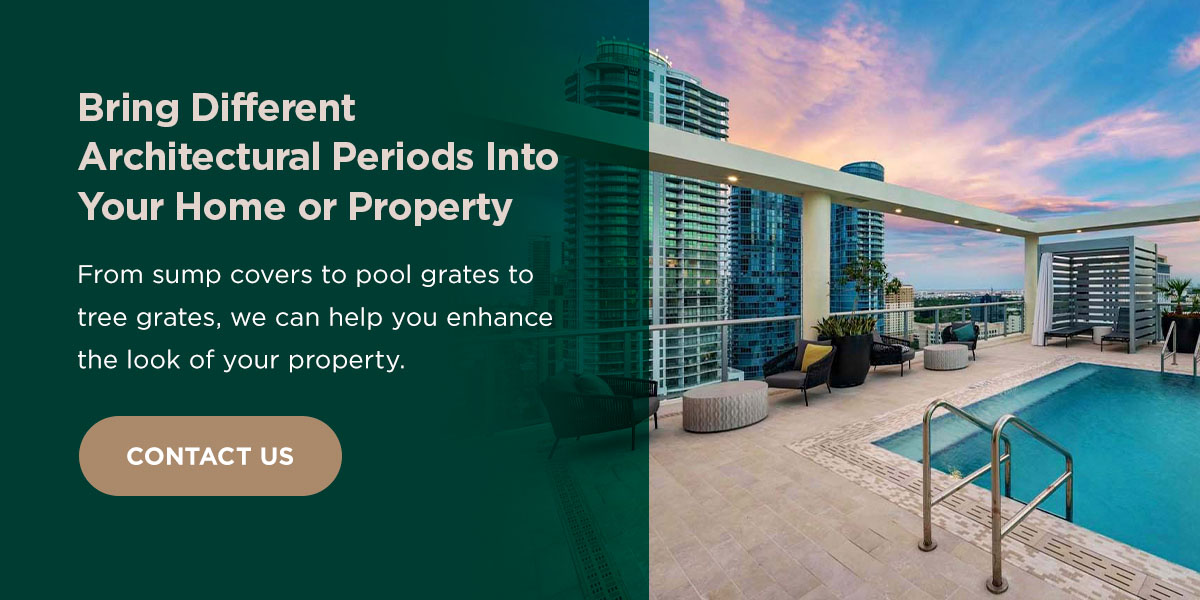An architectural styles timeline of the historical periods and styles of the West
Periods and styles complement one another. The two elements sometimes integrate different ideas. At times, they create new approaches, or sometimes they re-envision and reinvent old movements. While dates are always approximate, architecture is a fluid and changing art. As such, present-day buildings have radically evolved from prehistoric times. In tracing the history of architecture of the Western world, we discover that many significant buildings in the modern era were inspired by the majestic structures of the Mediterranean Sea. So, let's explore the beginnings of architecture and its evolution, from the first known structures to the soaring skyscrapers of the present day, taking a look at how each new movement builds upon its predecessor.

Prehistoric Times: 11,600 BC to 3,500 BC
Prehistoric-era architecture fascinates contemporary archaeologists, largely because it is very challenging to reconstruct. Most prehistoric structures were built out of fibrous materials, so they've been lost to the sands of time.
We know that humans used earth and stone to build structures, including stone circles, megaliths, cliff dwellings and thatch and mud structures. Perhaps the most famous example of prehistoric architecture is Stonehenge in England. Another stunning example is Göbekli Tepe in the Southeastern Anatolia Region of Turkey. This structure is made up of 20 T-shaped stone towers, each carved with illustrations of snakes, scorpions, lions, bears, foxes and other animals.
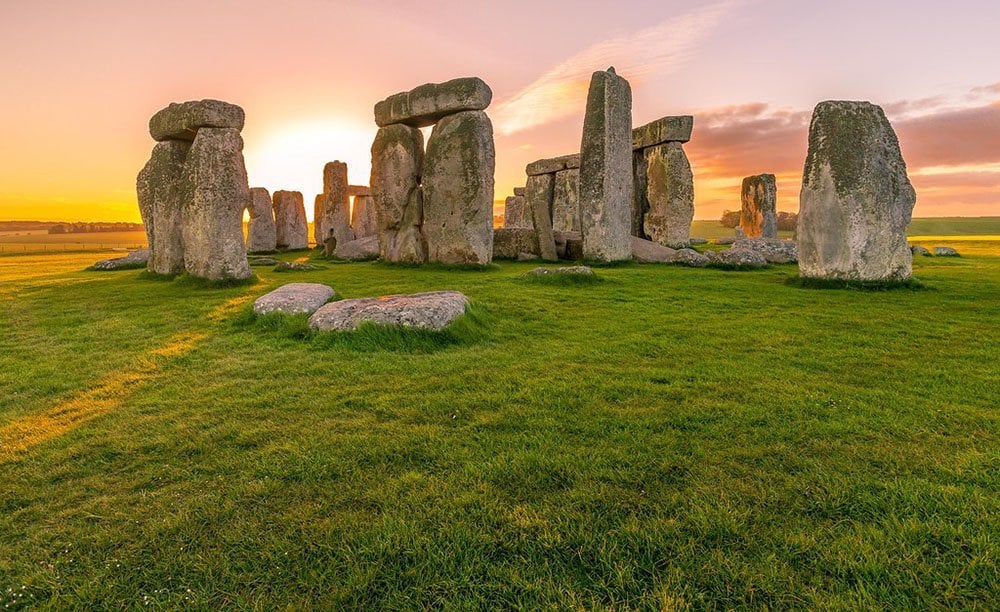 Leftover rocks of Stonehenge
Leftover rocks of StonehengeAncient Egypt: 3,050 BC to 900 BC
Ancient Egyptians built colossal temples, shrines and pyramids, which were a feat of engineering at the time. How exactly the pyramids were built is still a mystery, but many Egyptologists think that Egyptians used a ramp system to haul supplies.
The most prominent feature of ancient Egyptian architecture is perhaps the noticeable absence of wood in the structures. This was because timber did not fare well in the Egyptian dry climate and was not an abundant building resource. Other materials, such as sun-baked mud brick and limestone, were used as a substitute.
Classical: 850 BC to 476 AD
The period spanning the rise of ancient Greece to the fall of the Roman Empire saw magnificent buildings built precisely. Each architectural order — or style of building — from the Classical period can be defined and distinguished by its columns and entablatures.
Columns are one of the most recognizable elements of Classic architecture. While their primary purpose is to provide structural support to a building, they also contribute to a building's aesthetics. There are five orders of columns in Classical architecture: Tuscan, Doric, Ionic, Corinthian and composite.
The classical laws that define column styles and entablature are still being used to guide building design in the present day.
 The remains of Parthenon, an iconic Greece architecture
The remains of Parthenon, an iconic Greece architectureByzantine: 527 to 565 AD
Byzantine architecture thrived under the rule of Roman Emperor Justinian. Two defining characteristics of this area are the considerable use of interior mosaics and the dome height. Byzantine architecture features square-shaped, central floor plan churches designed after the Greek cross instead of the Latin one found in Gothic cathedrals. Its central domes are tall, stretching from a square base on half-dome pillars or pendentives.
Mosaic decorations and narratives are aplenty. An example is a mosaic image of Justinian located in the Basilica of San Vitale in Ravenna, Italy. The Byzantine Empire also rescinded the Classical order in place of Middle Eastern-inspired designs, such as decorative impost blocks.
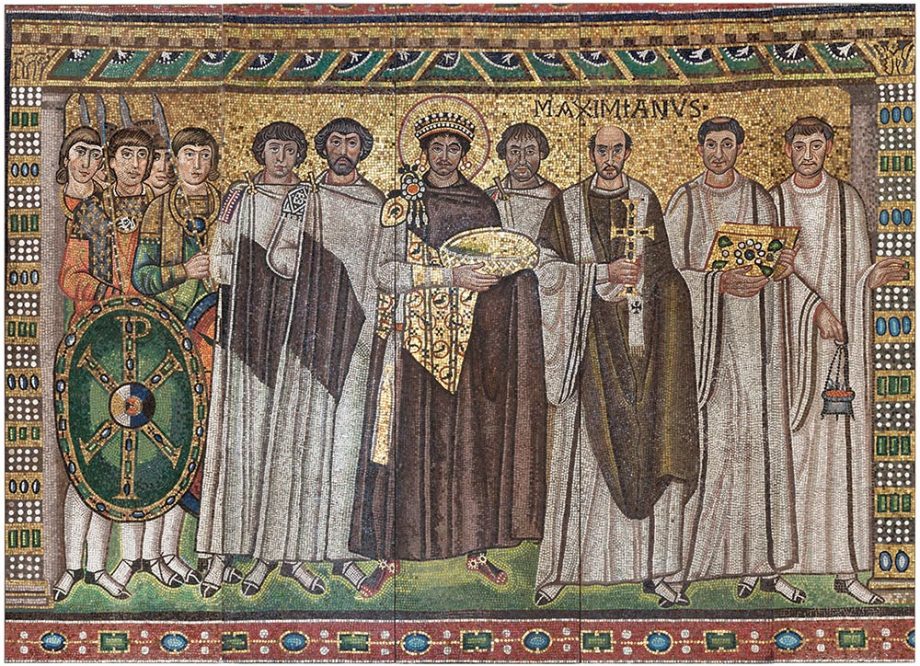 The mosaic image of Justinian, located in Basilica of San Vitale, Italy
The mosaic image of Justinian, located in Basilica of San Vitale, ItalyRomanesque: 800 to 1200 AD
Romanesque architecture was influenced by the spread of Roman culture across Europe. This style of architecture is defined by its colossal quality, round arches, groin vaults, thick walls, sturdy piers, round arches, huge towers and decorative arcading, seen in the churches and castles of the period. Every structure is clearly defined and often boasts symmetrical designs with simple aesthetics in comparison to the succeeding Gothic buildings. This form of architecture was common throughout Europe, albeit with differing regional characteristics and materials used. One example of Romanesque architecture is the Cathedral of Our Lady Immaculate.
Gothic: 1100 to 1450 AD
Gothic architecture is associated primarily with religious buildings, including impressive cathedrals like the Chartres Cathedral and the Notre Dame Cathedral. Gothic structures are characterized by ribbed vaulting, flying buttresses and pointed arches that help relieve some of the stress placed on other structural elements, making it possible to have smaller columns or piers that support the arch. Additionally, these buildings are taller and have a graceful appearance.
Many of the key elements of Gothic architecture — including the pointed arch, ribbed vaulting and trefoil arch — come from Islamic architecture. Pointed arches, for example, were seen as early as the 7th century in the Dome of Rock in Jerusalem.
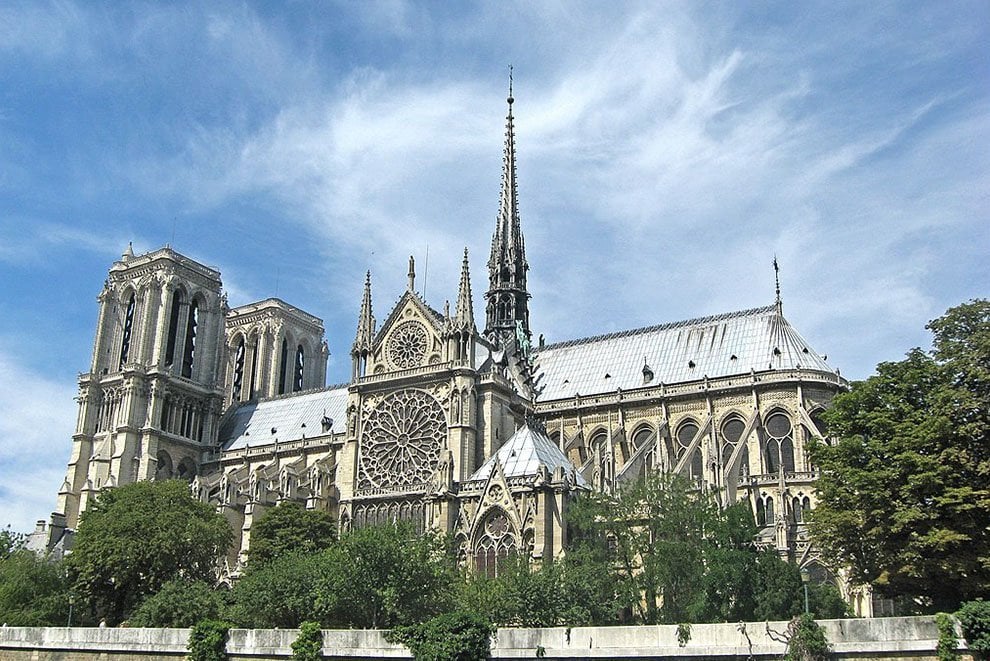 The Notre-Dame, located in Paris
The Notre-Dame, located in ParisRenaissance: 1400 to 1600 AD
The Renaissance period marked the return of classical ideas in France, England and Italy. Architects of the Renaissance period did not employ the intricate and vertical Gothic style in their designs. Instead, they favored the simplicity and balanced proportions of classicism.
Rounded arches, domes and the classical orders were repopularised through Renaissance architecture. The revival was made possible with an observation of Roman ruins alongside the study of the "Ten Books on Architecture" treatise written by Roman architect-engineer Vitruvius. The dissertation was the only surviving work on ancient architecture at that time.
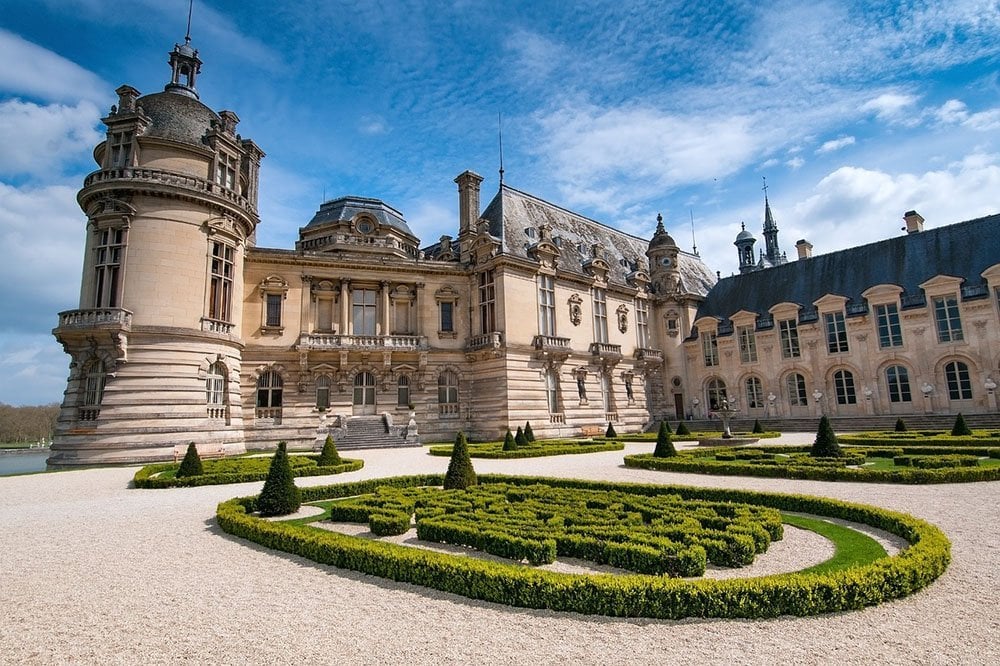 The Château de Chantilly, an architecture designed during the Renaissance period
The Château de Chantilly, an architecture designed during the Renaissance periodBaroque: 1600 to 1830 AD
Baroque architecture differs from country to country. In Italy, there are grand and elaborate churches adorned with irregular shapes and extravagant ornamentation. In France, the highly ornamented Baroque style is combined with classical restraint.
The Baroque style is highly theatrical and usually used to showcase wealth and power. The elaborate style often features ornately pained ceilings, interior and exterior gilding, less focus on order, rough stone and stucco in hallways, and vaulted cupolas. And unlike the facade of a Renaissance building, where the surface is typically neatly divided into sections, a Baroque surface is treated as a continuous whole.
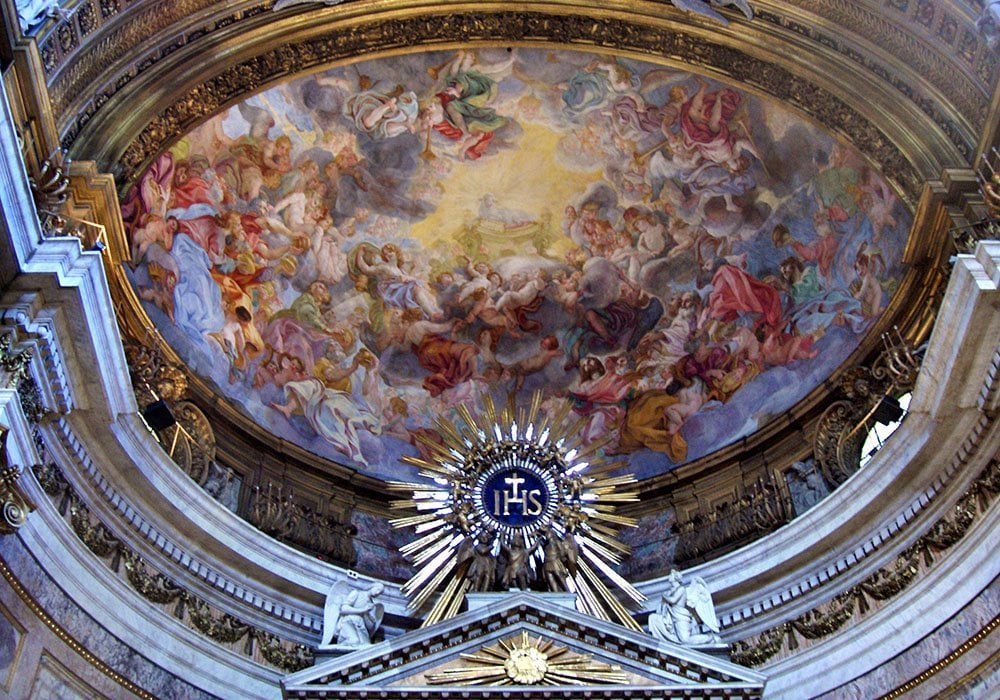 An interior view of the Church of the Gesù decorated Baroque style
An interior view of the Church of the Gesù decorated Baroque styleRococo: 1650 to 1790 AD
Rococo refers to a type of art and architecture that started in France during the mid-1700s. Some characteristics of Rococo buildings are their elaborate use of curves and scrolls, ornaments shaped like shells and plants, as well as oval form rooms. Patterns were also intricate with delicate details. Rococo architecture comes with complex shapes that are asymmetrical. Structures and art are typically found in light and pastel colors with bold dashes of brightness and light and a purposeful amount of gold. Rococo decorative arts prospered before Neoclassicism came into a trend within the Western world.
Neoclassicism: 1730 to 1925 AD
Renaissance architect Andrea Palladio inspired the ideas of Neoclassicism. This era brought about the return of classic shapes to Europe, Great Britain and the United States. Neoclassical structures were proportioned based on the classical orders and designs of ancient Greece and Rome. Many Neoclassical buildings have a symmetrical floor plan shape and congruent fenestration styles with tall columns that occupy the entire depth of the building. A double portico, triangular pediment and centered domed roof are also present in residential neoclassical architectures.
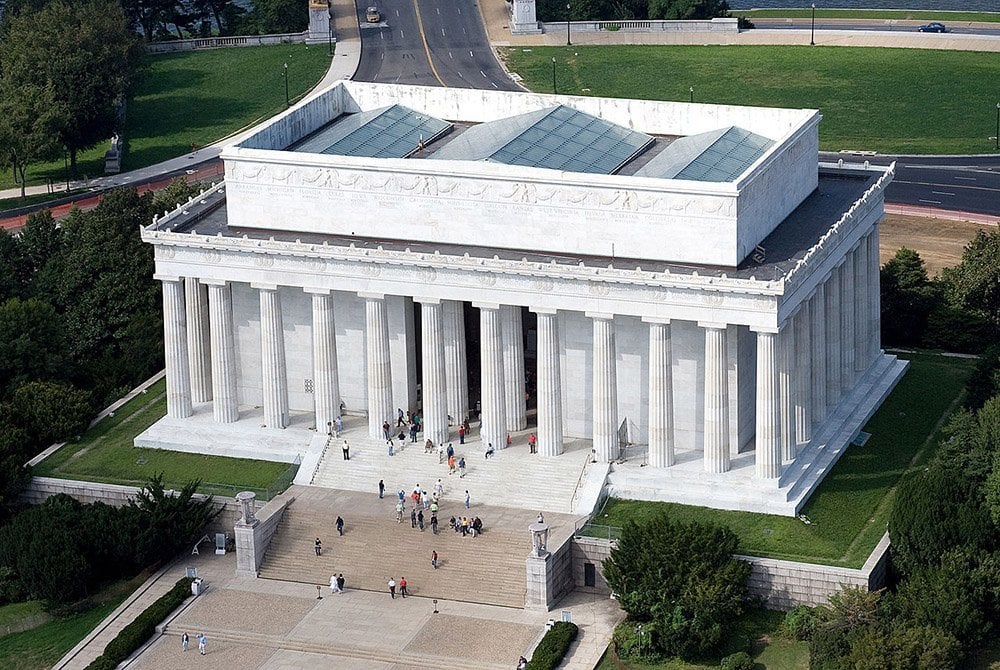 The Lincoln Memorial, located in the USA
The Lincoln Memorial, located in the USAArt Nouveau: 1890 to 1914 AD
Art Nouveau first appeared in fabric and graphic design before spreading to architecture and furniture in the 1890s. Asymmetrical shapes, arches and decorative surfaces that have curved, plant-like designs are common to the Art Noveau architectural style. It is most prominently recognized for its graceful curving lines. Some buildings appear to rise from the ground in a harmoniously swelling and undulating fashion. Lines are stretched and then bent back in a whiplash fashion. This style is known as a whiplash curve, which has since become a hallmark of Art Nouveau architecture.
 A section of Grand Hotel Europa
A section of Grand Hotel EuropaBeaux-Arts: 1895 to 1925 AD
Beaux-Arts architecture is known for its order, symmetry and extensive ornamentation. Beaux-Arts buildings are usually large, stone-constructed structures with front and flat or low-pitched roofs and symmetrical façades. The façade of these buildings is commonly adorned with Greek- and Roman-inspired fixtures. Balconies with vertical posts, held in position by large decorative columns alongside arched windows and grandly arched entryways, finished off with triangular roofs, were a common sight. Building details and decorations are over-the-top with three-dimensional carved panels dubbed bas-relief and cartouches, which are rounded convex surfaces. The building is surrounded by garlands, decorative swags and medallions or medal-like ornamentation. The interior of Beaux-Arts style government buildings also consists of high, vaulted ceilings and central domes.
 An outdoor area of the Palais des Beaux-Arts de Lille
An outdoor area of the Palais des Beaux-Arts de LilleNeo-Gothic: 1905 to 1930 AD
Gothic styles from 1100 to 1450 AD reemerged during the early 20th century. Picture gargoyles, arched windows and other medieval details from the Gothic Revival era punctuating the sky. Early neo-Gothic differs from the actual neo-Gothic, also called rationalist neo-Gothic. One main difference between early neo-Gothic and actual neo-Gothic is that the former borrowed elements from Gothic for decorative purposes. Actual neo-Gothic tried to grasp the basic principles behind Gothic before using them.
Early neo-Gothic also had ties to neo-Classicism regarding the general shape of buildings and materials used. While early neo-Gothic churches often used imitations of natural materials, this practice was utterly unacceptable in neo-Gothic architecture. Early neo-Gothic also closely mirrors English Gothic styles, although French and German Gothic examples first influenced neo-Gothic before the original ones at a later stage. Lastly, neo-Gothic churches were not plastered or painted, unlike early neo-Gothic churches.
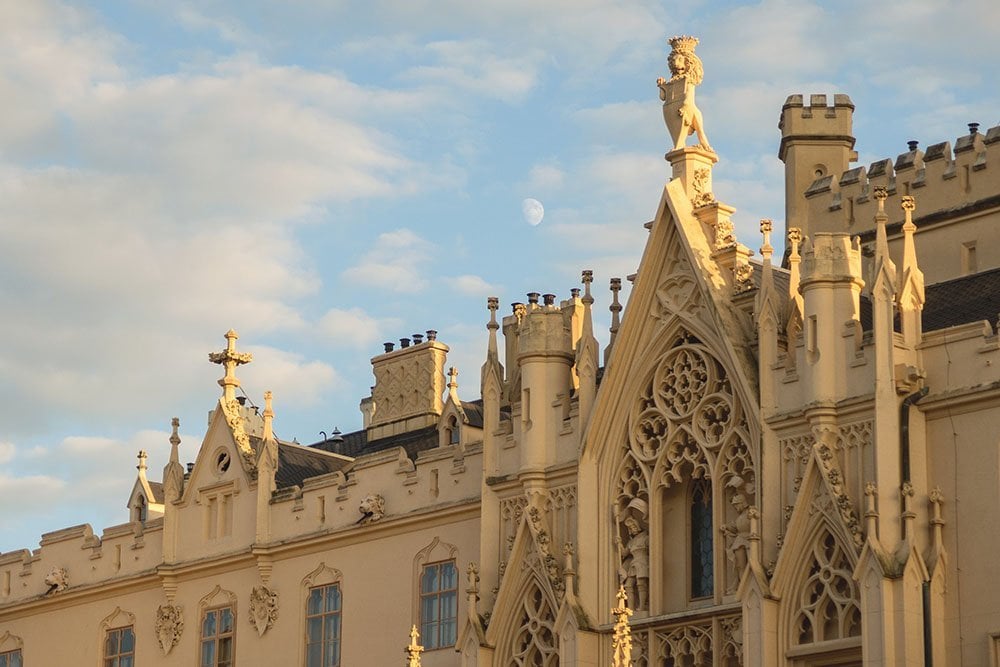 The Lednice Chateau, located in Lednice, Czechia
The Lednice Chateau, located in Lednice, CzechiaArt Deco: 1925 to 1937 AD
Spectacular effects like zigzag patterns are used on Art Deco buildings. Many Art Deco motifs stem from ancient Egyptian architecture. Here, a beautiful combination of bold geometric shapes and bright colors can be seen in furniture, textiles, ceramics, sculpture and architecture. Similar to Modernism, Art Deco architecture uses clean lines and minimal decoration. The design lends itself to buildings for entertainment purposes in addition to glamorous interiors for luxury hotels, restaurants and apartments. Lighting is also an integral aspect of Art Deco architecture, with a significant portion being made of neon strip lighting that emphasizes the majestic nature of the designs.
Modernist Styles: 1900 to Present
The 20th and 21st centuries are well-known for dramatic and diverse architecture. Modernist styles have slipped in and out of trend and continue evolving. The modern look offers simplicity in form and design. It places importance on abstraction, which is formed by clean lines, basic shapes and forms. This form is perceptible in the Weissenhof Estate located in Stuttgart, Germany. The structure comes in a box-like building with cubic volume, a flat roof and clean lines.
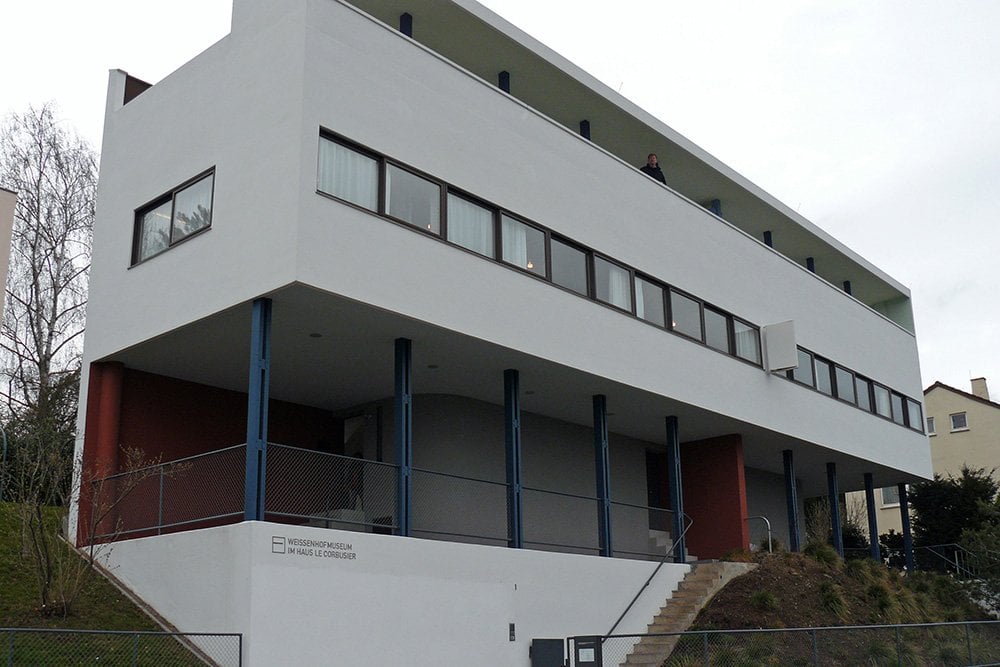 The entrance of Weissenhof Estate
The entrance of Weissenhof EstatePostmodernism: 1972 to Present
Postmodernism architectures were a result of the reaction against Modernist approaches. This generation drove new buildings imbued with historical details and familiar motifs. Many architectural movements contain designs with roots dating back to the classical and ancient periods. Postmodernist architects do not draw their inspiration from a single source. They are likely to be highly decorative and somewhat whimsical since they embody a combination of several design elements across different architectural styles into a single structure. This makes Postmodernism architecture one of the most eclectic of its kind. It is designed with the idea of form over function, deviating from the usual formal rules that govern a particular style.
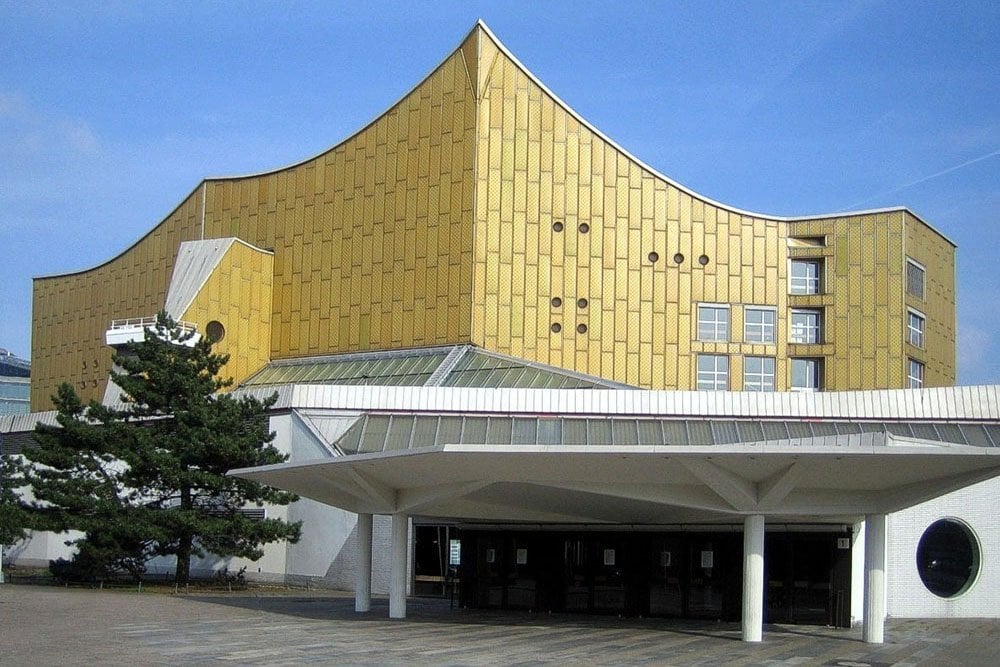 The Berliner Philharmonie, located in Berlin, Germany
The Berliner Philharmonie, located in Berlin, GermanyNeo-Modernism and Parametricism: 21st Century
Neo-Modernism encompasses a variety of architectural styles and designs. Ranging from Frank Gehry's sculpted designs to "Blobitecture," also known as blob architecture, whereby buildings feature an organic, amoeba-shaped building form. With neo-Modernism, the possibilities for architecture are endless.
Meanwhile, Parametricism is an architectural style created by computer technology and algorithms. The concept arose in the mid-1990s from digital animation techniques and has since risen to prominence in the early 21st century with the advancement of parametric design. This design approach has led to the formation of many curved, non-rectilinear buildings built during the last couple of decades.
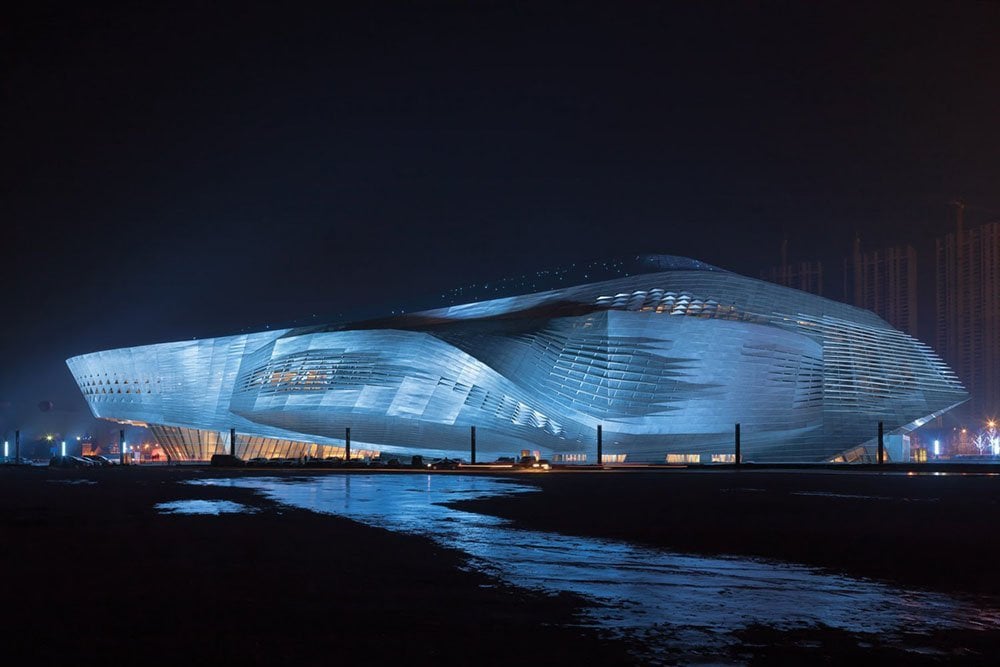 The Dalian International Conference Center, created with Parametricism
The Dalian International Conference Center, created with ParametricismBring Different Architectural Periods Into Your Home or Property
Different historical periods and styles can influence the generations that precede or succeed it. You can even bring these ancient architectural styles right into the comfort of your home or property — the Neo-Modernism and Parametricism styles of architecture are readily available.
If you want to incorporate past and present architectural ideas into your home or property, let Jonite be your partner. From sump covers to pool grates to tree grates, we can help you enhance the look of your property according to your architectural preferences. Contact us online to get started!

